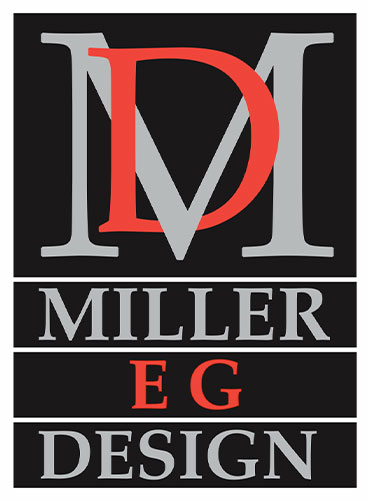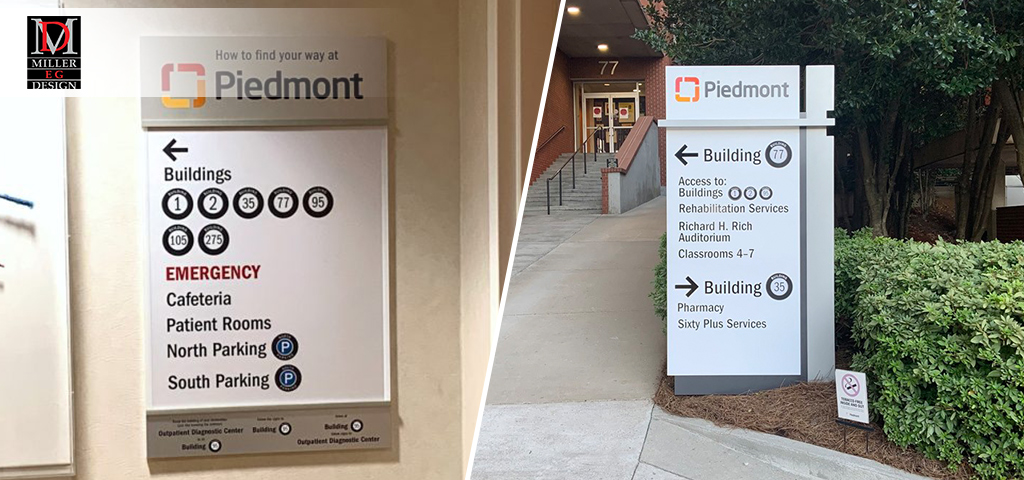You walk into a building that’s supposed to help you feel better—but instead, you’re instantly overwhelmed. The hallways are confusing. Signs feel cold or unclear. You’re not even sure where the waiting room is. In a place meant to support healing, the space itself feels like another challenge. If that feels familiar, you’re not alone—and it’s a powerful reminder of how environment shapes experience. For mental health facilities, signage isn’t just directional—it’s emotional. And it matters more than most realize.
At Miller EG Design, we believe thoughtful wayfinding can become part of the healing process. Every touchpoint—from room numbers to directional arrows—is an opportunity to create clarity, calm, and connection. But designing for behavioral health requires more than ADA compliance or clever design. It takes insight into the human experience, especially for individuals navigating stress, anxiety, or trauma.
- Reduce Cognitive Load With Clear, Predictable Paths
In mental health environments, patients and visitors may already be dealing with high emotional or psychological stress. Signage should not add to that burden. Wayfinding systems should reduce cognitive load by being visually consistent, easy to follow, and logically placed. Repetition, color coding, and simple icons can help create intuitive pathways so users don’t have to stop and “figure things out.” - Use Calm Colors and Friendly Typography
Colors play a powerful role in how we feel and respond. Harsh contrasts or sterile aesthetics can heighten anxiety, while warm neutrals and soft blues and greens can ease tension. Friendly, legible typefaces—not too clinical, not too playful—strike the right tone between professionalism and comfort. It’s about striking balance: accessible, but not institutional. - Consider Emotional Zones
Mental health facilities often include zones for treatment, group interaction, family support, and quiet recovery. Signage should subtly support these emotional shifts. For example, transitional spaces might use soft lighting and directional cues that gradually guide visitors from high-activity zones to more private, serene areas. It’s less about signage that says “Quiet Zone” and more about designing a mood that speaks for itself. - Incorporate Empathy Into Messaging
The words we use on signage matter. Instead of labeling a room “Psych Evaluation,” a term like “Private Consult Room” might feel more respectful and less clinical. Thoughtful language choices help preserve dignity, build trust, and reduce the stigma often attached to mental health services. In high-stress environments, even a word can change the tone of an experience. - Design for All Abilities and Experiences
Wayfinding must account for neurodivergent users, individuals with visual impairments, or those with cognitive challenges. This includes using high-contrast visuals, Braille where appropriate, and reducing visual clutter. Clear line-of-sight from one sign to the next also supports spatial memory and confidence in navigation. When signage is truly inclusive, it empowers all users, not just the majority. - Support Staff Efficiency and Safety
Signage isn’t only for patients. Staff need clear, efficient systems to move quickly, especially in emergency situations. Back-of-house signage should be just as carefully designed to allow for fast access, discreet communication, and coordination across teams. When staff can navigate with ease, they can focus more energy on patient care. - Create a Cohesive Brand That Reassures
Every mental health facility has a mission. Signage should quietly reflect that mission through materials, tone, and message. Whether the environment is pediatric-focused, trauma-informed, or addiction-recovery based, signage should visually affirm the values of the facility. Consistency builds trust and makes patients feel like they’re in the right place.
At Miller EG Design, we specialize in signage that understands people—not just buildings. With deep experience in behavioral health environments, we design with empathy, clarity, and purpose. If you’re working on a mental health facility—whether new construction or renovation—we’re ready to help you create wayfinding systems that comfort, guide, and connect. Visit us at 315 Northpoint Pkwy SE, Suite F, Acworth, GA 30102, or call us at (404) 947-6448 to talk about signage strategies that support mental wellness from the ground up.

